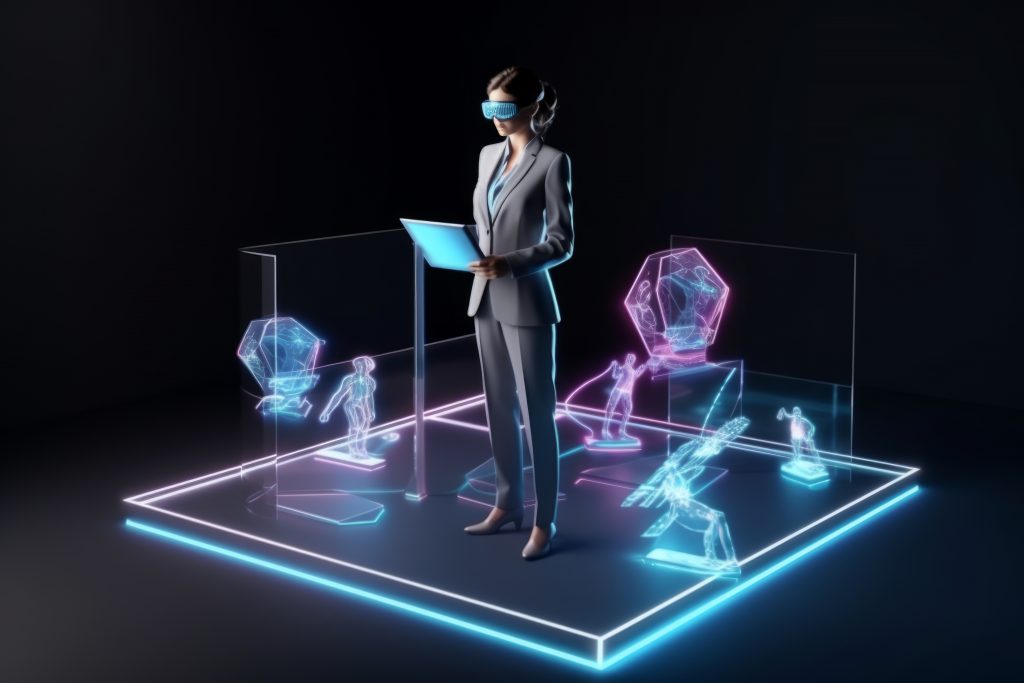Seema Ambastha, CEO of L&T Cloudfiniti, discusses data centers and what enterprises need to work well.

India is making significant strides in the digital world, and a vital part of this journey is the expansion of data centers across the country. These data centers are like giant libraries that store and manage the enormous amount of information we use every day on the internet, from watching videos to sending emails and everything in between.
Right now, India’s data centers have much room to grow. By the end of 2023, it’s expected that they’ll be able to handle about 1,048 MW (megawatts) of power, which is much more than the 880 MW they could manage in June 2023. And by the end of 2024, this number is predicted to jump even higher to around 1,300 MW (Source). This development showcases the rapid pace at which India is moving digitally.

Chief Executive Officer
L&T Cloudfiniti
In a recent conversation with CIO&Leader, Seema Ambastha, CEO of L&T Cloudfiniti, sheds light on how crucial data centers are for everything from big businesses to everyday internet users in India.
This growth is not just about having more space to store data. It is also important to ensure that these data centers are environmentally sustainable, making sure they function optimally. They consume copious amounts of electricity, so finding ways to make them more energy-efficient is a big focus.
The growth of data centers in India shows how quickly the country is becoming a significant player in the digital age. With focus on sustainability and skill development, India is on the right track to make the most of this digital boom.
CIO&Leader: How is digital transformation impacting data centers in India?
Seema Ambastha: There’s been a two-pronged shift. Firstly, the sheer volume of data has exploded, especially from AI and machine learning applications. These applications are data-hungry, requiring a significant increase in processing power. Traditional data centers weren’t built for this level of demand.
Secondly, businesses are no longer just focusing on storing traditional enterprise data. They’re also planning for future AI workloads, necessitating even greater processing capabilities.
CIO&Leader: In what ways are data centers adjusting to accommodate these changing demands?
Seema Ambastha: Businesses increasingly choose certified Tier 3 and Tier 4 data centers for superior reliability, flexibility, and efficiency. This signifies a shift towards outsourcing data center management, allowing businesses to focus on core competencies.
CIO&Leader: How are data centers catering to diverse business needs?
Seema Ambastha: Enforcing a client-centric approach with customizable cooling options allows businesses to optimize their Power Usage Effectiveness (PUE). Essentially, businesses can choose solutions that best suit their power consumption needs. They’re not locked into a one-size-fits-all approach.
CIO&Leader: How are data center providers working with hyperscalers like Google and Amazon?
Seema Ambastha: Hyperscalers are a significant force in the market. Our consulting, implementation, management, and design expertise positions us well to collaborate with them. This partnership is instrumental in scaling up India’s digital infrastructure to meet the ever-increasing demand for data storage and processing power.
CIO&Leader: What are the anticipated implications of edge computing on the functionality and infrastructure of data centers?
Seema Ambastha: Edge computing is the future! Edge data centers process data closer to its source, crucial for applications like 5G and the Internet of Things (IoT). India’s vast geography highlights the need to strategically place edge data centers in Tier 2 and 3 cities. This ensures seamless connectivity and supports digital transformation across the nation.
CIO&Leader: How is data security responsibility shared between data centers and businesses?
Seema Ambastha: Data center providers offer secure storage infrastructure, but businesses are responsible for implementing robust security and privacy protocols. Regulations require firms to prioritize data security investments and stay updated. Fortunately, readily available tools and technologies exist to address these challenges.
CIO&Leader: How will upcoming data security regulations impact the industry?
Seema Ambastha: The anticipated changes are positive. They will force businesses to tighten security measures and update agreements, ultimately leading to a more secure data ecosystem in India.
CIO&Leader: What are the most significant trends shaping the data center market?
Seema Ambastha: A growing focus on building eco-friendly data centers is a key trend. We’re committed to incorporating renewable energy solutions right from the start. This reduces our environmental impact and ensures long-term viability in the face of stricter environmental regulations.
CIO&Leader: In what ways is the role of the Chief Information Officer (CIO) adapting to the evolving digital landscape?
Seema Ambastha: CIOs are no longer just operational enablers but crucial to strategic business leadership. Their ability to leverage technology effectively, optimize time-to-value for their businesses, and ensure a competitive edge is vital for success. Their technology decisions and implementation speed significantly impact their organizations.
With inputs from Sachin Mhashilkar
Image Source: Freepik
